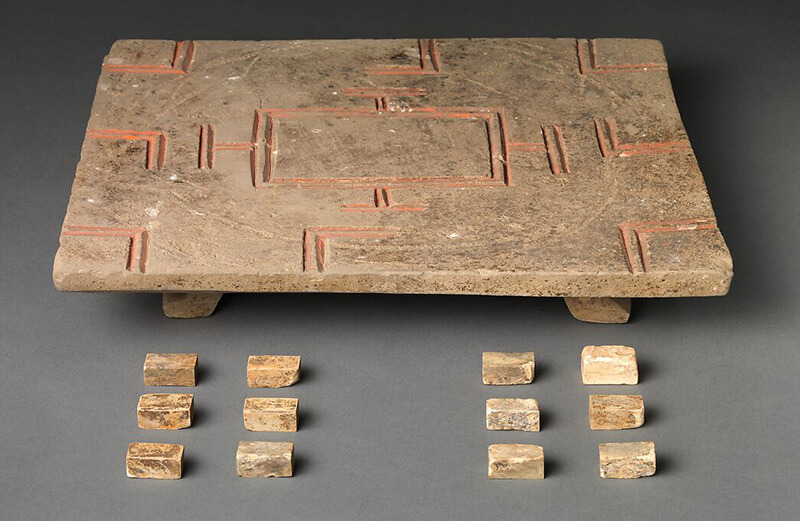Liubo is an ancient Chinese board game that was played during the Han dynasty (206 BCE – 220 CE) and is one of the earliest known board games in China. The game was mentioned in many ancient Chinese texts, including the Analects of Confucius and the Book of Rites.
The game involved two players, each with twelve pieces, and a board with a circular path and a central square. The pieces were often made of bone or jade and were shaped like animals, such as horses, elephants, tigers, and dogs. The game involved throwing six-sided dice to determine the movement of the pieces around the board. The dice were typically made of bone or ivory and had numbers or symbols on them that corresponded to different movements or actions in the game.
The exact rules for how the dice were used in Liubo are not entirely clear, as the rules of the game have been lost over time. However, historical records and archaeological finds suggest that the dice played a significant role in the game and were used to add an element of chance and unpredictability to the gameplay.
One theory is that players used the dice to determine how many spaces they could move their pieces, with different numbers on the dice corresponding to different movements. Another theory is that the dice were used to determine which special actions or abilities the player could use on their turn, such as capturing the opponent’s pieces or moving extra spaces.
Overall, the use of dice in Liubo was an essential part of the game and helped to make it a popular pastime for many centuries in ancient China.
The goal of the game was to move all twelve pieces around the board and into the central square while blocking the opponent’s pieces from doing the same. The game also involved capturing the opponent’s pieces by landing on the same square as them.
Liubo was not just a game of entertainment but also had military significance. It was often played by military commanders as a way to develop strategic thinking and decision-making skills.
The exact rules of Liubo have been lost over time, but several reconstructed versions of the game have been created based on archaeological finds and historical records. These versions have been used in modern tournaments and exhibitions, allowing people to experience this ancient game firsthand.

